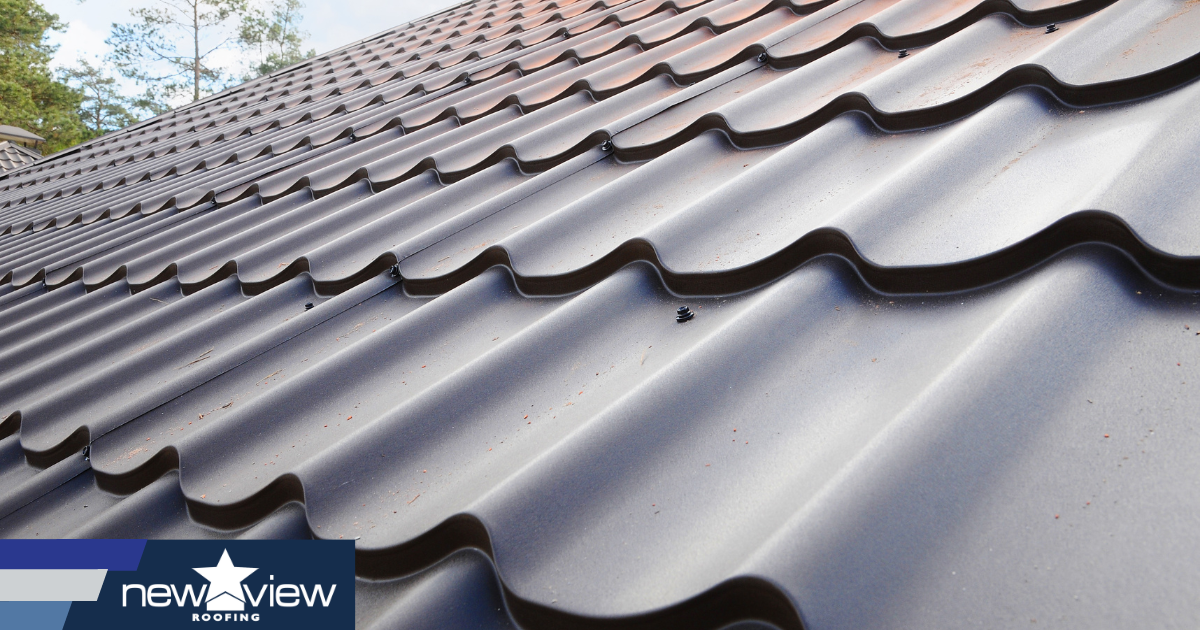How Gainesville Roofing Companies Can Change Your Home's Outside
How Gainesville Roofing Companies Can Change Your Home's Outside
Blog Article
Finest Practices for Ensuring Appropriate Roof Covering Air Flow
A balanced consumption and exhaust air vent ratio, frequently 1:300, plays a critical function, with intake vents preferably placed at the lower edge of the roofing for great air entrance and exhaust vents at the optimal for cozy air departure. Maintaining insulation away from vents is important to prevent airflow restriction.
Understand Ventilation Fundamentals
Appropriately understanding ventilation basics is important for making certain the long life and effectiveness of roof. Effective ventilation mitigates dampness build-up and temperature extremes in the attic, both of which can cause significant structural damages in time. A well-ventilated roofing aids in protecting against common concerns such as mold and mildew development, timber rot, and ice dams, which can jeopardize the integrity of the roof covering materials and the underlying structures.
The primary objective of ventilation is to promote the activity of air, enabling a regular exchange in between the exterior and indoor atmospheres. This balance is attained via a combination of intake and exhaust vents that collaborate to preserve optimal air flow. Consumption vents, generally situated along the soffits or eaves, allow fresh air to enter the attic room room, while exhaust vents, typically located at or near the roof ridge, enable warm, humid air to get away.
Key factors influencing the performance of roofing air flow consist of appropriate positioning, sufficient sizing, and making certain that both intake and exhaust vents are unhampered. Regular evaluation and maintenance are vital to determine prospective obstructions, damages, or inefficiencies in the ventilation system, thus safeguarding the roofing system's efficiency and sturdiness.
Kinds Of Roof Vents
Roofing system vents play a critical function in keeping effective attic ventilation and, by extension, the total health of the roof covering system. Numerous types of roof covering vents are readily available, each with special benefits customized to particular roof covering requirements.

Soffit vents are mounted under the eaves and work in tandem with roofing vents to guarantee a balanced consumption and exhaust system. By allowing cooler air to get in from below, soffit vents assist in the expulsion of hot air with upper vents. Gable vents, situated on the outside walls of the attic room, deal one more efficient service, particularly in homes with saddleback roofs.
Assess Your Present Ventilation

Next, think about the age and condition of your roof products and ventilation parts. Older systems might not abide by current building ordinance or might have weakened in time, lowering their efficiency. Conduct an extensive examination to determine any kind of indications of wear and tear, such as rust, damage, or gaps that might jeopardize the system's performance.
In addition, measure the attic temperature level and moisture degrees. Heats and humidity can indicate poor ventilation - roofing companies in gainesville florida. Make use of a hygrometer and thermometer to acquire exact readings, comparing them with outdoor conditions. Persistent discrepancies recommend prospective issues that require dealing with.
Installation Best Practices
Effective setup of roof covering air these details flow systems is paramount for making sure optimum efficiency and longevity. Appropriate installment starts with understanding the specific ventilation demands of the roofing and the structure it covers. This includes determining the proper ratio of consumption to exhaust vents, generally adhering to the 1:300 regulation, which stipulates one square foot of air flow for each 300 square feet of attic room flooring room.

Intake vents ought to be set up at the roofing system's reduced edge, frequently in the soffits, to allow cool air to go into. Exhaust vents, on the other hand, must be set up near or at the roofing system's top to assist in the exit of warm, moist air.
Seal all vent links diligently to avoid air leaks and potential water infiltration. Use top notch materials and follow producer guidelines to guarantee sturdiness and performance. Additionally, integrating ridge vents with baffles can dramatically boost airflow performance by avoiding wind-driven rainfall and snow from entering the attic room.
Eventually, accurate setup of roofing ventilation systems alleviates prospective issues such as mold development, ice dams, and architectural damages, making sure the roof covering's stability and the structure's general wellness.
Routine Maintenance Tips
Consistency in maintenance methods is essential to making sure the long-term efficiency of roof ventilation systems. Routine inspections are crucial, preferably done biannually-- in the spring and loss. During these evaluations, make sure that vents are devoid of particles, nests, and other obstructions that might hinder airflow. Look for any indicators of dampness build-up or mold, as these can show improper ventilation or leakages (gainesville fl roofing companies).
Cleansing the vents is an additional vital job. Utilize a soft brush or look here a vacuum to eliminate dirt and particles from consumption and exhaust vents. Be careful not to harm the vent displays or louvers during the process. Additionally, check the attic room area for any indications of water damage, which could endanger the honesty of the roof.
Proper insulation is similarly vital. Ensure that attic room insulation does not obstruct the vents, as this can drastically restrict air flow. Reposition or change it to preserve a reliable obstacle. if any kind of insulation has actually moved or worked out.
Last but not least, replace any damaged or missing parts immediately. Busted vents, cracked roof shingles, or tatty blinking can all add to insufficient ventilation and ought to be attended to right away. Routine upkeep makes sure that the roofing air flow system go to the website functions ideally, therefore extending the life expectancy of the roof itself.
Final Thought
Ensuring proper roof covering ventilation is vital for preserving the effectiveness and longevity of a roof system. Adherence to the 1:300 consumption and exhaust vent ratio, paired with the strategic positioning of vents, is vital. Regular biannual assessments, debris cleansing, and ensuring insulation does not obstruct air movement are crucial practices. Carrying out these ideal techniques will certainly promote a well-ventilated roof system, thus minimizing potential concerns associated with moisture build-up and extreme warm, inevitably extending the roof's life expectancy.
A balanced consumption and exhaust vent ratio, commonly 1:300, plays a crucial duty, with consumption vents preferably positioned at the lower edge of the roof for great air access and exhaust vents at the peak for cozy air leave. Intake vents, typically located along the soffits or eaves, enable fresh air to get in the attic room room, while exhaust vents, frequently located at or near the roofing system ridge, allow warm, damp air to escape.
Soffit vents are set up under the eaves and work in tandem with roof vents to make sure a balanced intake and exhaust system. By enabling cooler air to get in from below, soffit vents assist in the expulsion of warm air with upper vents. Adherence to the 1:300 consumption and exhaust vent ratio, combined with the calculated positioning of vents, is essential.
Report this page